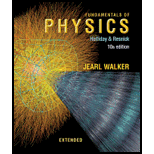
Concept explainers
GO Submarine rescue. When the U.S. submarine Squalus became disabled, at a depth of 80 m, a cylindrical chamber was lowered from a ship to rescue the crew. The chamber had a radius of l.00 m and a height of 4.00 m, was open at the bottom, and held two rescuers. Lt slid along a guide cable that a diver had attached to a hatch on the submarine. Once the chamber reached the hatch and clamped to the hull, the crew could escape into the chamber. During the descent, air was released from tanks to prevent water from flooding the chamber. Assume that the interior air pressure matched the water pressure at depth h as given by p0 + ρgh. where p0= 1.000 atm is the surface pressure and ρ = 1024 kg/m3 is the density of seawater. Assume a surface temperature of 20.°C and a submerged water temperature of −30.0°C (a) What is the air volume in the chamber at the surface? (b) If air had not been released from the tanks, what would have been the air volume in the chamber at depth h = 80.0 m? (c) How many moles of air were needed to be released to maintain the original air volume in the chamber?
Want to see the full answer?
Check out a sample textbook solution
Chapter 19 Solutions
Fundamentals of Physics Extended
Additional Science Textbook Solutions
Glencoe Physics: Principles and Problems, Student Edition
University Physics Volume 1
University Physics (14th Edition)
Essential University Physics: Volume 2 (3rd Edition)
University Physics with Modern Physics (14th Edition)
Physics (5th Edition)
- A liquid with a coefficient of volume expansion just fills a spherical shell of volume V (Fig. P16.53). The shell and the open capillary of area A projecting from the top of the sphere are made of a material with an average coefficient of linear expansion . The liquid is free to expand into the capillary. Assuming the temperature increases by T, find the distance h the liquid rises in the capillary.arrow_forwardA vertical cylinder of cross-sectional area A is fitted with a tight-fitting, frictionless piston of mass m (Fig. P18.40). The piston is not restricted in its motion in any way and is supported by the gas at pressure P below it. Atmospheric pressure is P0. We wish to find the height h in Figure P18.40. (a) What analysis model is appropriate to describe the piston? (b) Write an appropriate force equation for the piston from this analysis model in terms of P, P0, m, A, and g. (c) Suppose n moles of an ideal gas are in the cylinder at a temperature of T. Substitute for P in your answer to part (b) to find the height h of the piston above the bottom of the cylinder. Figure P18.40arrow_forwardConsider the piston cylinder apparatus shown in Figure P20.81. The bottom of the cylinder contains 2.00 kg of water at just under 100.0c. The cylinder has a radius of r = 7.50 cm. The piston of mass m = 3.00 kg sits on the surface of the water. An electric heater in the cylinder base transfers energy into the water at a rate of 100 W. Assume the cylinder is much taller than shown in the figure, so we dont need to be concerned about the piston reaching the top of the cylinder. (a) Once the water begins boiling, how fast is the piston rising? Model the steam as an ideal gas. (b) After the water has completely turned to steam and the heater continues to transfer energy to the steam at the same rate, how fast is the piston rising?arrow_forward
- Review, (a) H it has enough kinetic energy, a molecule at the surface of the Earth can escape the Earths gravitation in the sense that it can continue to move away from the Earth forever as discussed in Section 13.6. Using the principle of conservation of energy, show that the minimum kinetic energy needed for escape is m0gRE where m0 is the mass of the molecule, g is the free-fall acceleration at the surface, and RE is the radius of the Earth, (b) Calculate the temperature for which the minimum escape kinetic energy is ten times the average kinetic energy of an oxygen molecule.arrow_forwardAn airtight dispenser for drinking water is 25 cm × 10 cm in horizontal dimensions and 20 cm tall. It has a tap of negligible volume that opens at the level of the bottom of the dispenser. Initially, it contains Water to a level 3.0 cm from the top and air at the ambient pressure, 1.00 atm, from there to the top. When the tap is opened, water will flow out until the gauge pressure at the bottom of dispenser, and thus at the opening of the tap, is 0. What volume of water flows out? Assume the temperature is constant, the dispenser is perfectly rigid, and the water has a constant density of 1000 kg/m3.arrow_forwardSuppose that a copper sphere of radius 3 cm is beaten and drawn into a wire of diameter 0.2 cm. What is the length of the wire?arrow_forward
- An open-closed pipe of length L = 25 m contains air at atmospheric pressure. It is thrust vertically down, closed-end on top, into a freshwater lake until the water rises halfway up in the pipe. What is the depth h of the lower end of the pipe? Assume that the temperature is the same everywhere and does not change.arrow_forwardIn 2085, your company wins a contract to deliver oxygen to several asteroid-based habitats from another asteroid with plenty of oxygen locked up in ice. Since there is no drag in space, the size of the oxygen containers is not an issue, and the most economical method turns out to be to enclose about 6 x 105 kilograms of cold but gaseous oxygen at about half atmospheric pressure in a Mylar sphere 100 m in diameter. To the sphere, you have strapped a small rocket engine. While the engine is firing, the engine presses into the sphere roughly 10 meters, like a finger pushing in on a balloon, as the sphere accelerates. The engine exerts a constant thrust until the sphere reaches its interasteroidal cruising speed of 100 m/s. The sphere travels about 5.0 km while the engine is firing. What fraction of the energy the rocket engine has given to the sphere ends up as internal energy in the gas just before the engine shuts off?arrow_forwardWhich statement about isotherms of a cubic EOS is/are FALSE? I. At Tr = 1.0 and any pressure, the first and second derivatives of P with respect to V will both be equal to zero.II. When Tr < 0 the substance is always a VLE mixture inside the pressure dome. a.Neither I nor II b.Both I and II c.I only d.II onlyarrow_forward
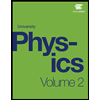
 Physics for Scientists and Engineers, Technology ...PhysicsISBN:9781305116399Author:Raymond A. Serway, John W. JewettPublisher:Cengage Learning
Physics for Scientists and Engineers, Technology ...PhysicsISBN:9781305116399Author:Raymond A. Serway, John W. JewettPublisher:Cengage Learning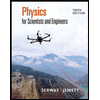 Physics for Scientists and EngineersPhysicsISBN:9781337553278Author:Raymond A. Serway, John W. JewettPublisher:Cengage Learning
Physics for Scientists and EngineersPhysicsISBN:9781337553278Author:Raymond A. Serway, John W. JewettPublisher:Cengage Learning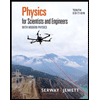 Physics for Scientists and Engineers with Modern ...PhysicsISBN:9781337553292Author:Raymond A. Serway, John W. JewettPublisher:Cengage Learning
Physics for Scientists and Engineers with Modern ...PhysicsISBN:9781337553292Author:Raymond A. Serway, John W. JewettPublisher:Cengage Learning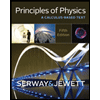 Principles of Physics: A Calculus-Based TextPhysicsISBN:9781133104261Author:Raymond A. Serway, John W. JewettPublisher:Cengage Learning
Principles of Physics: A Calculus-Based TextPhysicsISBN:9781133104261Author:Raymond A. Serway, John W. JewettPublisher:Cengage Learning




